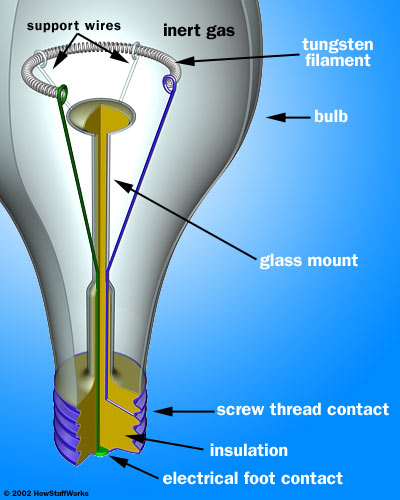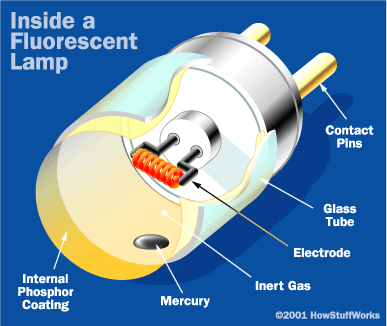

Normal lightbulbs are INCANDESCENT LIGHT BULBS.
 |
they work by sending electricity through a filiment (usually tungsten) that is thin enough to create a lot of resistance, which turns into heat. the heat is so hot that the filament becomes glowing white hot. these light bulbs waste a great deal of energy, which is part of the reason for the popularity of fluorescent light bulbs. |
 |
Electrons flow between the electrodes at both ends of the fluorescent tube. When they interact with mercury atoms, the mercury atoms become "excited," or ionized, and as they change from their excited state to their unexcited state, they give off ultraviolet photons. These photons hit the phosphor coating of the light bulb, which creates visible light (the phosphor "fluoresces").
Fluorescent bulbs produce less heat and more lumens per watt, so they're more about six times more efficient than incandescent bulbs.
check out this site for more info on how fluorescent light bulbs work
(this site sells the bulbs pictured on the mainpage)
Neon light bulbs are filled with neon, argon, or krypton gas. When these elements' atoms ionize, they produce photons in the spectrum of visible light. So there's no need for a phosphor coating to fluoresce UV light into visible light, like in fluorescent light bulbs.
